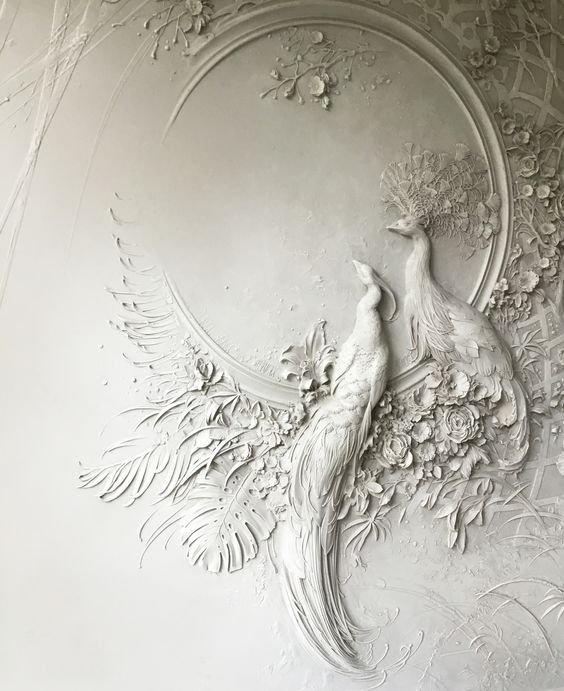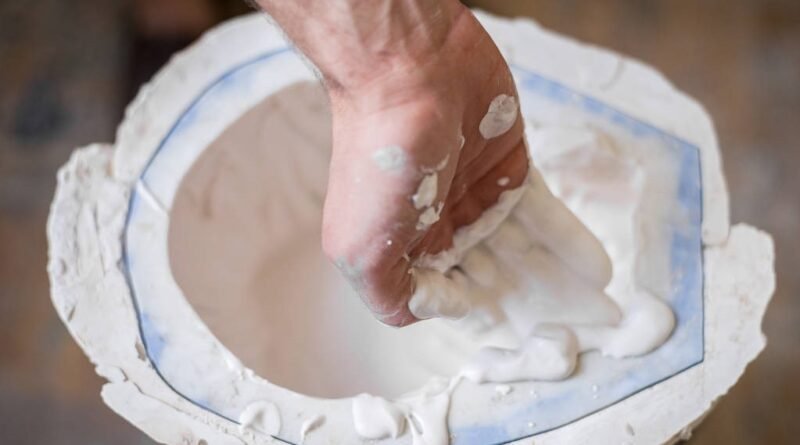How to Design Ceiling with Plaster of Paris?
Have you thought? How to Design Ceiling with Plaster of Paris?? The attraction of a beautifully designed roof can transform any space into a visible work. Plaster of Paris provides endless possibilities for creating a versatile and time-testing material, complex and exquisite roof design. In this guide, we will fly into the art of designing a panoramic roof using the plaster of Paris, from the concept to execution, to infect your interiors with timeless attraction and sophistication.
Table of Contents

How to Design Ceiling with Plaster of Paris?
Image Source: Pinterest
Understanding Plaster of Paris
Plaster of Paris, also known as gypsum plaster, is a white powder obtained from gypsum, which is a naturally occurred mineral. When mixed with water, it makes a paste that can be molded into different shapes and textures. Once dried, the plaster of Paris becomes rigid in a durable material suitable for creating ornate roof design.

Step-by-Step Guide to Designing with Plaster of Paris
1. Inspiration and Design Concept:
First, plant inspiration in the best variety possible, through magazines, online or historical references. Nail down a that compliments the overall beauty of the room. Be it classical, contemporary, or eclectic in style — a thorough design vision will inform the whole process.
2. Measurements and Sketches:
Take the measurements of the roof and make an accurate drawing of your design idea. Bear in mind the locations of light fixtures, air vents other architectural factor that can impact design.
3. Selection of Plaster of Paris:
Select the right kind of Paris plaster for your job. Normal plaster of Paris is sufficient for most designs, but complex designs, load-bearing designs may need special variants.
4. Preparation and Safety:
Ensure working area is well ventilated before proceeding. Wear safety glasses, gloves and a dust mask to keep from breathing in fine plaster particles.
5. Creating Molds and Components:
Make molds and parts that will make a design, based on your sketch It can be the rosette, molding or geometric pattern, decorative.
6. Installation:
Bonding Agent or Primer: A coat of bonding agent or primer on the roof surface shall be applied for better adhesion. Begin with attaching plaster of Paris elements with appropriate glue for this job. Those are the elements you want to focus on to balance alignment and create a cohesive design.
7. Seamless Integration:
Blend the components basically in the roof surface. Use additional plaster to fill gaps, smooth edges and create a uniform appearance. A putty knife and sandpaper can help achieve an innocent finish.
8. Texture and Detailing:
Increase the design with texture and details. Use with techniques such as stipling, carving, or embossing to add depth and visual interest. These details can bring your design to life, allowing it to be unique and captivating.
9. Drying and Finishing:
Allow the plaster to dry well according to the manufacturer’s instructions. Once dried, inspect the design for any flaws. Apply a coat of sand and primer below the rough spot to prepare for painting or further ornamentation.
10. Colour and Finish:
Decide whether you want to leave the plaster in its natural white color or apply paint to a specific color scheme. Consider using decorative techniques such as glazing or anticing to increase the complications of the design.
11. Lighting Enhancement:
Include strategic elements strategically to highlight the design and create a captivating drama of light and shade such as lights, chandeliers, or covel lighting.
Maintenance and Care:
Clean your plaster of Paris roof to preserve dust regularly and your beauty. Avoid abusive cleaning agents that can damage delicate surfaces.
Designing a roof with plaster of Paris is an artistic effort that requires a balance of creativity, skills and accuracy. From the concept of a unique design to execute it with cleverness, this process can turn any room into a breathtaking place that ends elegance and sophistication.
Read Next

